
Viking Names
Thormod
Þormóðr is an Old Norse male personal name from Þór- ‘the god’s name Þórr’ compounded with –móðr ‘excitement, wrath’. The name is common in both Norway and Iceland and is also recorded in Sweden and Denmark. It is also found in Normandy both independently and in place-names. Þormóðr is also the first element in Thurmaston, Leicestershire.
Read More
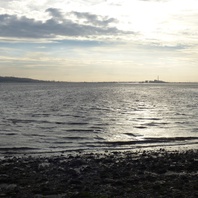
Blog Post
Havelok the Dane
© David Wright via Geograph, CC BY-SA 2.0 The Middle English romance Havelok the Dane was written around 1300 for a Lincolnshire audience still aware of its Viking heritage. It tells the story of Havelok, the son of the Danish king Birkabeyn, who as a small child is imprisoned after his father’s death along with his sisters. Their supposed guardian kills the sisters, but Havelok escapes through the help of a kindly peasant called Grim. This Grim eventually takes his whole family, including Havelok, to England, where he founds the settlement known as Grimsby. Havelok eventually marries an English princess called Goldboro and becomes king of all England. Written from a later medieval perspective, the poem’s primary purpose is to celebrate the harmoniously dual Anglo-Saxon and Viking heritage of the English nation, and to acknowledge the full assimilation of the Danish-origin inhabitants into this nation. Havelok’s trajectory from prince to pauper and back again is a common romance motif and the story should not be taken too literally. But it does plug into local memories of the Danish migration to Lincolnshire. As an explanation for this migration, the tyranny of the Danish ruler presented in Havelok parallels the role of Harald Finehair in Norway, whose tyranny is presented in the Icelandic sagas as having been the main cause of the emigration to Iceland. Even though Grim is a fictional character, the passage in the poem which explains how he arrived and how Grimsby came to be named after him has the ring of truth. It describes how he sailed into the Humber at the north end of the province of Lindsey. There he settled and built a small house. Because he owned the place, it took its name from him and has been called Grimsby ever since: In Humber Grim bigan to lende, In Lindeseye, riht at þe north ende. Þer sat his ship up-on þe sond, But Grim it drou up to þe lond; And þere he made a litel cote To him and to hise flote. Bigan he þere for to erde, A litel hus to maken of erþe, So þat he wel þore were Of here herboru herborwed þere; And for þat Grim þat place auhte, Þe stede of Grim þe name lauhte; So þat Grimesbi it calle He þat þer-of speken alle; And so shulen men it callen ay, Bituene þis and domesday. The stone plaque shown above, which is derived from the thirteenth-century town seal of Grimsby, depicts Grim as a warrior in the middle, with the crowned figures of Havelok to the left and his bride Goldboro on the right. Havelok the Dane Database of Middle English Romance Eleanor Parker, Dragon Lords. The History and Legends of Viking England. London: I.B. Tauris, 2018.
Read More

Viking Names
Torksey
Torksey, in the Lawress Wapentake of Lincolnshire, is a difficult name. The second element is Old English eg ‘an island, dry ground in fen, raised land in wet area’, but the first element, though apparently a personal name, is hard to interpret. The most plausible suggestion is that it is the Old English male personal name Turoc. The Anglo-Saxon Chronicle for the year 872 records that Her nam se here winter setle. æt Turces ige ‘And it [the Great Heathen Army] took winter-quarters at Torksey in Lindsey, and then the Mercians made peace with the host’. Recent excavations and other archaeological finds at Torksey are helping to build up our understanding of what that here was and what it did during the winter of 872-3.
Read More
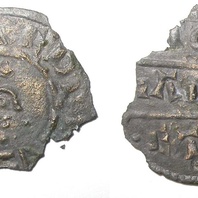
Viking Objects
Coin of Aethelred (1989-58/3395)
A silver penny of Aethelred I of Wessex was found in the mass grave at Repton and minted by a moneyer apparently called Liabinc. The location of minting is unknown. Aethelred I was King of Wessex from 865 until his death in 871. Aethelred’s reign coincided with the arrival of the Viking Great Heathen Army in England and he fought them with little success during their invasion of Wessex which began in 870. After his death, he was succeeded by his youngest brother, Alfred the Great, who carried on the war with the Vikings. Minting coins was a way of controlling the means of exchange within a kingdom and which created a more easily administered standardized system of trade. Moreover, the coins themselves were often used as propaganda, portraying symbols and statements that gave off a desired message. The Vikings later used the minting of coins to legitimize their own rule.
Read More

Viking Names
Normanton
Normanton, in the Repton and Gresley Hundred in Derbyshire, takes its name from the Old English ethnonym Norðman ‘Northman, Norwegian’ and the Old English element tun ‘farm, settlement’. There are several places of this name, predominantly in the East Midlands: five in Nottinghamshire, and some in Derbyshire, Leicestershire, Lincolnshire and Rutland, and one in the West Riding of Yorkshire. Traditionally, the place-name has been interpreted as referring to a settlement of Norwegians (in an area where most of the Scandinavian settlers were Danes). However, the exact implications of such a name are not yet fully understood and are the subject of ongoing work by Dr Jayne Carroll of the Institute for Name-Studies, University of Nottingham.
Read More
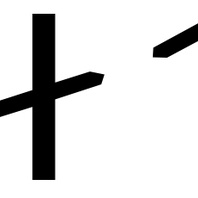
Viking Names
Kati
Káti is a fairly common male personal name in the Viking world, occurring in the inscriptions on at least six Swedish rune-stones. It is the first element in the place-name Caythorpe, Nottinghamshire. There are also several place-names in Lincolnshire which contain this name, including Cadeby and Caythorpe. The name may originally have been a nickname, as it means ‘the cheerful one’.
Read More
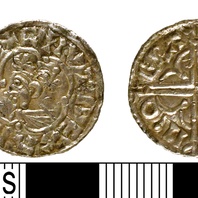
Viking Objects
Coin of Cnut the Great (NARC-5DBF29)
This silver penny was minted in Cambridge for King Cnut the Great, the Danish king who reigned over England from 1016-1035. This particualr coin is is classified as a quatrefoil obverse type. Minting coins was a way of controlling the means of exchange within a kingdom and which created a more easily administered standardized system of trade. Moreover, the coins themselves were often used as propaganda, portaying symbols and statements that gave off a desired message. The Vikings later used the minting of coins to legitimize their own rule.
Read More
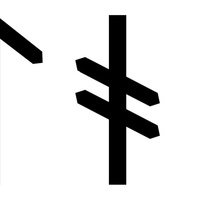
Viking Names
Slodi
Slóði was originally a byname meaning ‘lazy one’. It is extremely rare in West Scandinavia, recorded only once as a personal name and once as a byname and potentially found in a place-name. It is recorded a few times in runic inscriptions in Sweden. Slóði may be the first element in the place-name Sloothby, Lincolnshire; however, there are several other possibilities for this element.
Read More
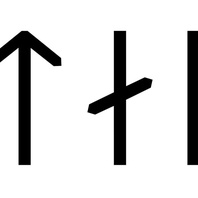
Viking Names
Stari
Stari (also Starri) is mainly found in Iceland, though there is one in a Swedish rune-stone inscription and it has been suggested as the first element in Staythorpe, Nottinghamshire. It derives from a by-name meaning ‘one who stares’.
Read More
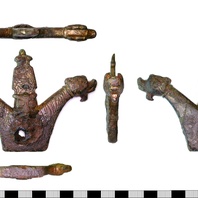
Blog Post
Blazing Saddles? A mysterious Viking object from Leicestershire (Part 1)
Mystery objects are always fun things to debate in archaeology. When something appears to buck the trends of any known design or type, and displays something unseen before, it offers a chance to re-examine items stashed in storage in museums, and maybe most importantly, our own sometimes stodgy thoughts! My research speciality is equitation and equestrian equipment of late prehistory, as my doctoral thesis tried to make sense of Late Iron Age riders across northwest Europe. So many happy hours were spent buried in war booty tack from Denmark, Germany and the Baltic, piecing together the story of the horse in Ireland and Britain! More recently, I’ve been illustrating and cataloguing Viking-Irish bridle assemblages for Dr. B.G Scott, with particular attention to workshop variations on cheek pieces. So , with my horsie head on I have been dragged in to give my tuppence worth on the peculiar little mount recorded in the PAS scheme as LEIC-0A4CB4, and look at it from a very practical equestrian point of view, alongside an archaeological one. Fig. 1 The Mystery Object. (c) Wendy Scott, CC BY 2.0 Found in the Hinckley and Bosworth region of Leicestershire, the small copper alloy and gold mount is described as having “ a rectangular base from which three projections rise. Two are in the shape of animal heads on long necks; each has a mane along the neck made up of grooves, a raised collar at the top of the neck, large circular eyes, and rounded ears decorated with a triquetra. Underneath the chin, each head has a beard-like protrusion. The heads are decorated in the round, but the mane appears on one face only. The central projection is decorated on one face only. At the base is the upper part of a human face, with relief eyes, eyebrows, nose and moustache. Above is grooved interlace decoration which appears to be in the Borre style” (Geake 2004, 334) Despite some past speculation that it may be part of a cheek piece for a bridle, the small attachments on the back (see Fig. 1) rule this theory out. A cheek-piece on the outside of a bit (not to be confused with the leather or fibre strapping which connects to the bit) fulfils the task of stopping a mouthpiece slipping in the horse’s mouth, making the bit ineffective as a means of control. As such, it needs to have certain features, such as a suitable aperture to feed the connecting strapping through to construct the actual bridle, and some evidence that it was large enough to integrate with the mouthpiece (see Fig. 2). Fig. 2 Cheek Pieces by Baroque Horse Store.Image: (c) Baroque Horse Store The aperture on this little artefact is too raw, irregular and small to allow this, although it could, possibly be a decoration from somewhere else on the bridle, potentially the brow band. Based on finds from sites such as Balladoole, on the Isle of Man (Bersu and Wilson 1966), Navan, in Meath (Wilde 1861, 611) and some stuff found around Coleraine some time back, as well as the general archaeological record, I am inclined to feel that Scandinavian riders had rather good seats and rode well. Bridles tend to be functional, with straightforward single-jointed snaffles, rather than the bizarre and cruel bits often seen in the Roman world. Viking bits are often permutations on full cheek snaffles, and occasionally decorated with the exquisite dragonesque forms described by Pedersen (1996-97). Just because I think you’d like to see one up close and personal, I’ve shown in Fig. 3 a specimen from The Hunt Museum in Limerick from my own research – they are delightful things, but as you can see, rather substantial, well in excess of 11 cm in length. Fig. 3. A close-up of a dragonesque cheek-piece, from Hunt Museum, Limerick. Note the use wear at strap junctions.Image (c) R Maguire While the mysterious little Leicestershire object could be a decorative mount off anything, it does resemble the kind of decoration often present on Viking saddles. For more on Viking saddles, see Part 2 of this article. References: Bersu, G. and Wilson, D.M. 1966. Three Viking graves in the Isle of Man (No. 1). Society for Medieval Archaeology. Geake, H. 2005 Medieval Archaeology 49. Pedersen, A. 1996-97. ‘ Riding gear from late Viking Denmark’ Journal of Danish Archaeology 13. 133-161 Wilde, W.R., 1861. A descriptive catalogue of the antiquities of animal materials and bronze in the museum of the Royal Irish Academy. Dublin: Hodges. See Part 2 of this post HERE. Dr Rena Maguire recently completed her PhD at Queen’s University Belfast. Her main research interests lie in Late Iron Age material culture studies, metals and horses.
Read More

Blog Post
The Rich and the Brave: Burials, Weapons, and Warriors
The common association of highly furnished weapon burials containing a male skeleton with warriors is still a highly debated topic and one that has a profound impact on how we view Vikings. Much scholarly ink has been spilled discussing theories surrounding motivations behind grave good deposition and the relation between weapon burials and the deceased in Scandinavia, Britain, and with varying degrees of success. Choosing which theory to apply to a situation is complicated by a variety of factors not least of which is that historical, geographical and chronological context changes how one interprets a ritual depending on the time and place it was practised. Furthermore, there is usually no knowledge of who selected the objects to be deposited and thus no concrete idea why they did so. According to Heinrich Härke, textual sources are the best means with which to attempt to determine motivations but are rarely present for the space and time under review (Härke 2014, 53–54). A Viking sword found at Repton, Derbyshire. (c) Derby Museums and Art Gallery While weapons are highly-visible in archaeological contexts, their use in burials only represents a small segment of the population within a social context that had many different high-status burial practices (Harrison 2015, 314). Secondly, poorly furnished burials are understudied with no definitive comments made about them (Harrison 2015, 314–15; 2008, 166–90). In addition, the relationship between perceived and actual status and the fact that no artefact has a fixed value or meaning but rather its meaning is imposed both complicate the issue further (Harrison 2015, 304). The perceived importance of an individual is heavily influenced by local burial tradition. For example, at Kilmainham/Islandbridge a large number of weapon burials with high-quality swords were discovered which reflects the importance of Dublin between the ninth and tenth centuries while the number of graves containing these high-quality swords may reflect the role competitive display played within Dublin society (Harrison 2015, 304; Harrison and Ó Floinn 2014, 75–93). However, the situation in the former Danelaw is very much the opposite with a general paucity of weapon burials east of the Pennines (Harrison 2015, 304; Graham-Campbell 1980, 379; Richards 2000, 142). Harrison argues that this may be a reflection of the higher value placed on weapons in the Danelaw than in Dublin or elsewhere along the western seaboard (Harrison 2015, 304). One last point to consider when examining burials and grave goods is that the choice of grave goods can reflect how the deceased or those burying them wished their identity to be portrayed can equally affect weapon burials. Moreover, grave goods can underline the hybridity of an individual’s identity. For example, the shield bosses of Kilmainham/Islandbridge combine elements of both Irish small bosses and Anglo-Saxon conical bosses to create a fusion shield boss type only found near Dublin reflecting the distinct local identity of its elites (Harrison 2015, 309; Harrison and Ó Floinn 2014, 122–25; Bøe 1940, 33, 38). So how can weapons in burials be used to potentially identify whether or not individuals were involved in military activities? In simple terms, there is no definitive way of correlating the two but by studying the graves within their historical and geographical context, it may be possible to make a case. One strong indicator that an individual may have been involved in military activities are any signs of trauma on the skeletons, such as those found at Repton, alongside the inclusion of weapons as grave-goods. References: Bøe, Johs. 1940. Viking Antiquities in Great Britain and Ireland, Part 3: Norse Antiquities in Ireland. Edited by Haakon Shetelig. Oslo: H. Aschehoug. Graham-Campbell, James. 1980. ‘The Scandinavian Viking-Age Burials of England: Some Problems of Interpretation’. In Anglo-Saxon Cemeteries, edited by Phillip Rahtz, Lorna Watts, and Tania Dickinson, 379–82. British Archaeological Reports British Series 82. Oxford: Archaeopress. Härke, Heinrich. 2014. ‘Grave Goods in Early Medieval Burials: Messages and Meanings’. Morality 19 (1): 41–60. Harrison, Stephen. 2008. ‘Furnished Insular Scandinavian Burial: Artefacts & Landscape in the Early Viking Age’. Dublin: Trinity College Dublin. Harrison, Stephen. 2015. ‘“Warrior Graves”? The Weapon Burial Rite in Viking Age Britain and Ireland’. In Maritime Societies of the Viking and Medieval World, edited by James Barrett and Sarah Gibbon, 299–319. Society for Medieval Archaeology. Leeds: Maney Publishing. Harrison, Stephen, and Raghnall Ó Floinn. 2014. Viking Graves and Grave-Goods in Ireland. Dublin: National Museum of Ireland. Richards, Julian. 2000. Viking Age England. Stroud: Tempus.
